Phil Leake, Alison Benjamin, Daniel Wainwright and Jess Carr
Data journalism team

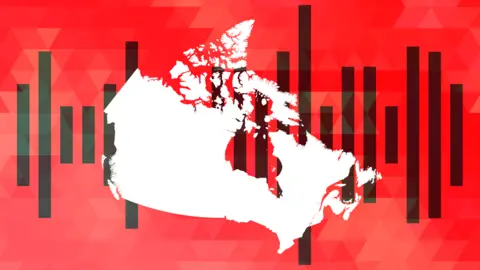 BBC
BBC
Mark Carney’s Liberal Party has won enough seats in the House of Commons to form a government in Canada.
However, CBC News projects they will fall short of the majority they wanted.
Carney is set to remain prime minister, having only assumed the role in early March following Justin Trudeau’s resignation.
His main rival, Conservative leader Pierre Poilievre, has lost his own seat as has Jagmeet Singh, leader of the New Democratic Party (NDP).
Carney’s Liberals have 169 seats according to preliminary results but would need 172 for a majority.
The Conservatives are set to remain in opposition as the second-largest party and are on 144 seats, with over 99% of polls having reported results.
The Bloc Québécois is on 22 seats and only runs candidates in the province of Quebec. The NDP has been reduced to seven seats and the Green Party to one.
Both the Liberals and the Conservatives have seen a significant rise in their share of the national vote compared with four years ago.
Increased support for Canada’s two largest parties has come at the expense of smaller parties, particularly the NDP whose share of the popular vote is down by almost 12 percentage points.

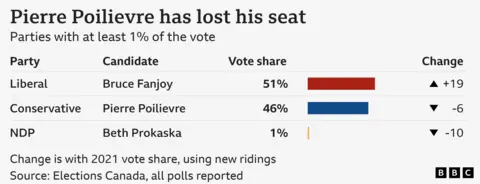
The rise in support for the Conservatives was not enough to save Poilievre, who lost his own seat in Carleton, Ontario.
The 45-year-old had promised a return to “common sense politics”.
Opinion polls at the start of the year had the Conservatives over 20 percentage points ahead of the Liberals. But after the resignation of former Liberal Prime Minister Justin Trudeau and the arrival of new PM Mark Carney and the tariffs announced by US President Donald Trump, that lead evaporated.
In his own seat, Poilievre had 90 opponents, mostly independent candidates linked to a group calling for electoral reform.
NDP leader Singh also lost his own seat in the House of Commons, coming third behind the Liberal and Conservative candidates.
Canada has a “first-past-the-post” electoral system.
The candidate who gets the most votes in each electoral district, or riding, wins that seat and become a Member of Parliament (MP).
The Liberals and the Conservatives have dominated the popular vote, with both parties receiving more than 40% each of ballots counted across Canada.
This has them on track to win a combined 90% of seats.
The NDP has received just over 6% of the total vote, but this translates to just 2% of seats in the House of Commons.
The Bloc Québécois has just over 6% of the vote and a similar share of seats.

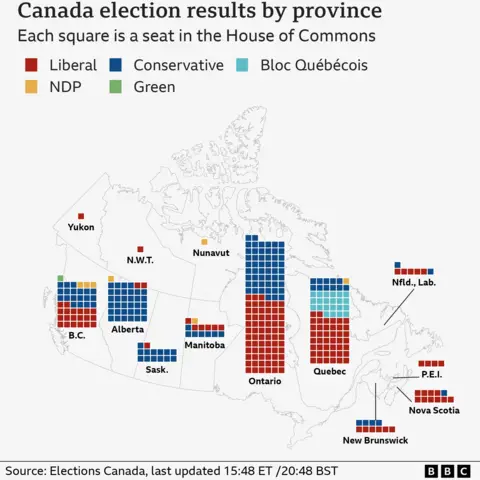
The Liberals have the most seats in the key provinces of Ontario and Quebec, which account for 200 of Canada’s 343 electoral districts.
The Conservatives took all but three of the 37 seats in Alberta, while it was a close race between the two main parties in British Columbia, where the Conservatives have 19 seats and the Liberals 20.

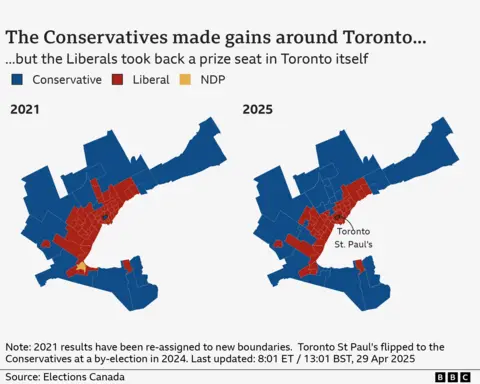
One of the most closely-watched areas was around Toronto. The “905” are places that all share the same telephone code.
While the Liberals have won in most of Toronto, including a seat they lost in a by-election last year, the Conservatives were able to flip some of the ridings in the surrounding region.
The NDP have lost a seat, Hamilton Centre, that they’d held for over 20 years.

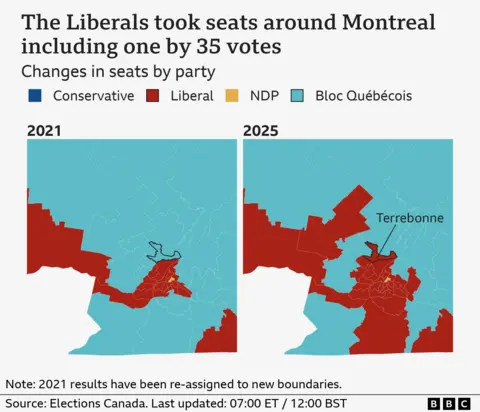
After Ontario, Quebec is the second most populated province of Canada and has a big impact on the results of federal elections.
The Bloc Québécois, which focuses on Quebec interests and only runs candidates in the province, was defending 35 seats, a number which changed after boundaries were reviewed. It has lost 13 of them, according to preliminary results.
The Liberals won Terrebonne, a suburb of Montreal, from the Bloc by a margin of just 35 votes. They also won back LaSalle-Émard-Verdun, which the Bloc took in a by-election last year.
The NDP held on to their seat in Rosemont-La Petite-Patrie in Montreal.

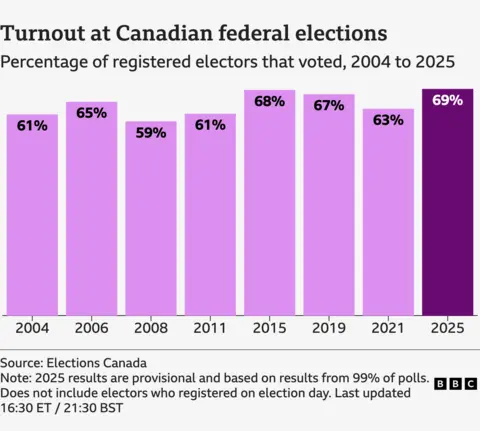
Turnout has surpassed the levels seen in 2015 and 2019, with 69% of registered electors having voted. This is according to the preliminary results from Elections Canada.
More than 7 million Canadians cast their ballots in advance, setting a new record for early voter turnout, Elections Canada said.


